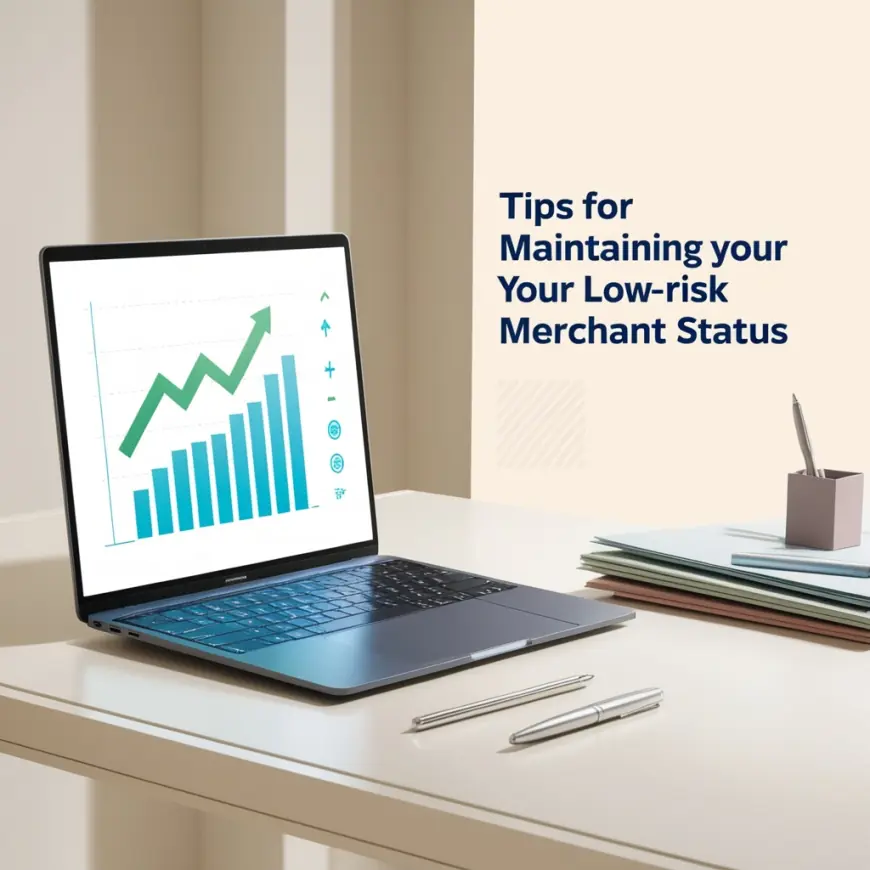Tips for Maintaining Your Low-Risk Merchant Status
In the world of payment processing, being a low-risk merchant is something businesses seek eagerly. It opens doors to lower fees, fewer payment disruptions, and smoother relationships with banks and payment processors.

In the world of payment processing, being a low-risk merchant is something businesses seek eagerly. It opens doors to lower fees, fewer payment disruptions, and smoother relationships with banks and payment processors. Even if you are not in a high-risk business industry, maintaining this status is not automatic — it requires a proactive approach to avoid slipping into a higher-risk category.
For businesses new to payment processing and those looking to solidify their position, this blog will walk you through actionable steps to preserve your low-risk merchant standing for a long. So let’s read!
What Makes a Low-Risk Merchant?
Before delving into how to maintain a low-risk status, it’s important to understand what defines it. Low-risk merchants typically operate in stable industries with minimal volatility, such as retail, subscription-based services, or professional services. They exhibit predictable transaction patterns, low chargeback rates, and consistent sales volumes.
In essence, low-risk merchants are the ideal customers for payment processors and banks. Their financial stability and low likelihood of fraudulent transactions make them more reliable, resulting in preferential treatment, lower fees, and faster approval processes. This status not only benefits the merchant but also ensures a smoother payment experience for their customers.
The Importance of Maintaining Low-Risk Status
Once you have achieved low-risk merchant status, maintaining it is crucial for long-term advantages. The benefits extend beyond cost savings. Low-risk merchants enjoy quicker access to new payment technologies, a more straightforward underwriting process, and a higher level of trust with payment gateways and banks.
Additionally, this status can help future-proof your business. In an era where fraud and payment disputes are increasing, being seen as a reliable, low-risk merchant provides a competitive edge. Customers are more likely to trust businesses that operate seamlessly without interruptions or disputes in their payment processes.
Strategies to Maintain Low-Risk Merchant Status
Maintaining your low-risk status requires a comprehensive approach that includes managing transactions, adhering to compliance standards, and fostering transparent communication with payment processors. Here are some practical strategies to achieve this:
Minimal Chargebacks
One of the most effective ways to stay low-risk is by minimizing chargebacks. Chargebacks occur when a customer disputes a transaction and requests a reversal through their bank. High chargeback rates are a red flag for payment processors. To mitigate this, ensure that your refund and return policies are clear and easy to find. Customers are less likely to dispute a charge if they understand your policies upfront. Additionally, fraud detection tools can help you identify and prevent unauthorized transactions, further reducing the risk of chargebacks.
Stable Transaction Volumes
Maintaining stable transaction volumes is another critical factor. Payment processors monitor your sales patterns, and sudden spikes or irregularities can raise concerns. For instance, a significant increase in transaction size or frequency without prior notice might trigger a review of your account. If your business is growing or introducing new products, it’s wise to inform your payment processor in advance to avoid unnecessary scrutiny.
PCI DSS Compliance
Compliance with Payment Card Industry Data Security Standards (PCI DSS) is non-negotiable for maintaining low-risk status. These standards are designed to protect cardholder data and ensure secure payment processes. Regular audits of your payment systems and infrastructure are essential to meet these standards. By staying compliant, you protect your customers’ data and reinforce your reputation as a trustworthy merchant.
Communication and Transparency
Transparent communication with your payment processor is a cornerstone of low-risk merchant management. Keep them informed of any changes in your business, whether it’s a new product line, changes in business structure, or updates to your terms of service. Maintaining accurate contact information ensures that you can address any issues swiftly and efficiently.
Advanced Fraud Prevention Measures
Adopting advanced fraud prevention measures is another key strategy. Fraudulent transactions not only harm your customers but also put your business at risk of being labeled high-risk. By implementing strong authentication methods, such as two-factor authentication, you can significantly reduce the likelihood of fraud. Leveraging AI-driven fraud detection tools can also help identify suspicious patterns before they escalate into larger issues.
Importance of Team Training
Educating your team on compliance and fraud prevention practices is equally important. Your employees are the frontline of your business, and their awareness of best practices can go a long way in protecting your merchant status. Regular training sessions and updates on the latest fraud prevention technologies ensure your team is equipped to handle potential risks effectively.
Common Mistakes to Avoid to Maintain Low-Risk Business Status
Several pitfalls can jeopardize your low-risk status, often without you realizing it. One of the most common mistakes is neglecting chargeback management. Ignoring disputes or failing to resolve them promptly can lead to higher chargeback ratios, which are a major factor in determining your risk level.
Similarly, failing to update your business information with your payment processor can cause unnecessary complications. Outdated details about your products, services, or contact information can lead to misunderstandings and even account freezes.
Another common issue is overlooking compliance requirements. Staying up-to-date with PCI DSS standards and other relevant regulations is essential for protecting both your business and your customers. Compliance lapses can result in penalties, fines, or even termination of your payment processing account.
Steps to Take if Your Risk Level Increases
Despite your best efforts, there may be times when your risk status changes. If this happens, it’s important to act quickly to address the underlying issues. Start by enhancing your fraud prevention measures and implementing stricter customer authentication protocols. This demonstrates to your payment processor that you’re taking steps to mitigate risks.
Open communication with your payment processor is crucial during this time. Share your action plan for addressing the issues that led to the change in risk status. Payment processors appreciate transparency and are often willing to work with merchants who take proactive measures.
Conclusion
Maintaining low-risk merchant status is an ongoing process that requires diligence and a proactive approach. By minimizing chargebacks, staying compliant with industry standards, and fostering clear communication with payment processors, you can safeguard your status and enjoy the benefits of smooth payment processing.
In a rapidly evolving digital economy, your ability to adapt and prioritize security will set your business apart. Take these steps today to maintain your low-risk status and build a foundation for long-term success.
What's Your Reaction?
 Like
1
Like
1
 Dislike
0
Dislike
0
 Love
0
Love
0
 Funny
0
Funny
0
 Angry
0
Angry
0
 Sad
0
Sad
0
 Wow
0
Wow
0

















































